Longest Continuous Shot in School Shooting Scene
5. The Silent House (Gustavo Hernández, 2010, 1h26m)
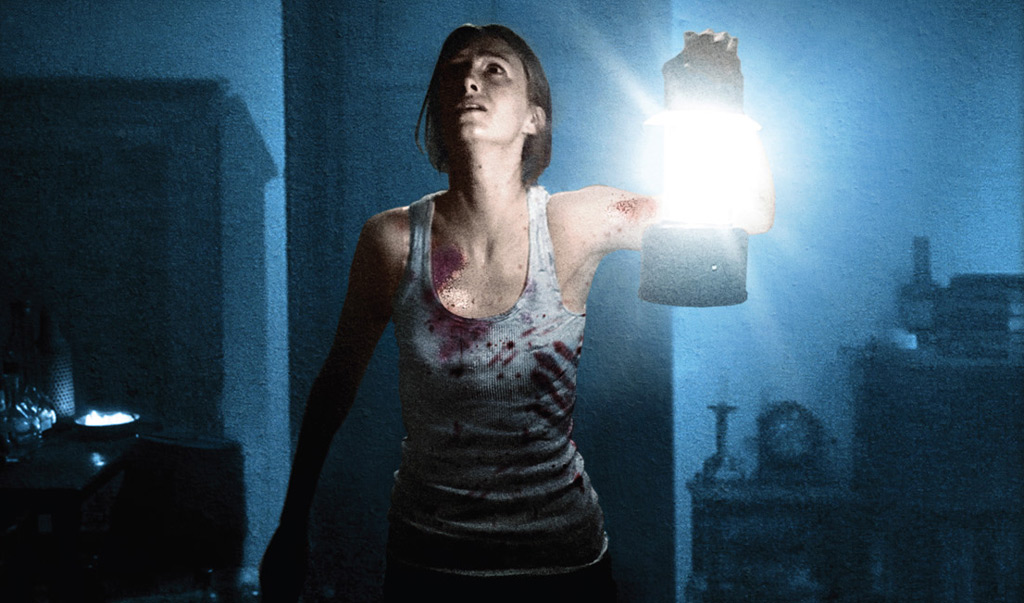
Claiming to be the first horror movie filmed to appear as one single take, the original, Uruguayan The Silent House inspired a remake starred by Elizabeth Olsen in 2011, using the same gimmick.
Though it was filmed with a common Canon EOS 5D Mark II, that can only record 15 minutes of footage at a time, the original movie relies on the dark environment of its setting to hide the cuts and make it seem like we're watching the real-time plight of Laura (Florencia Colucci), who moves with her father to a cottage in outskirts of a small Uruguayan village in order to renovate it for the owner, who wishes to sell it.
On their first night there, Laura and her dad hear strange sound, and as he goes outside to investigate, she's left alone.
Shown at Cannes and Sundance, Gustavo Hernández's film was equally praised and slammed by critics, but it remains a terrifying, interesting cinematic experience to behold, if only for the gimmick of the single-take, real-time illusion, always effective in immersing the spectator in the story. Made with only six thousand dollars and in the course of 4 days, the movie is definitely an indie triumph.
4. Timecode (Mike Figgis, 2000, 1h37m)
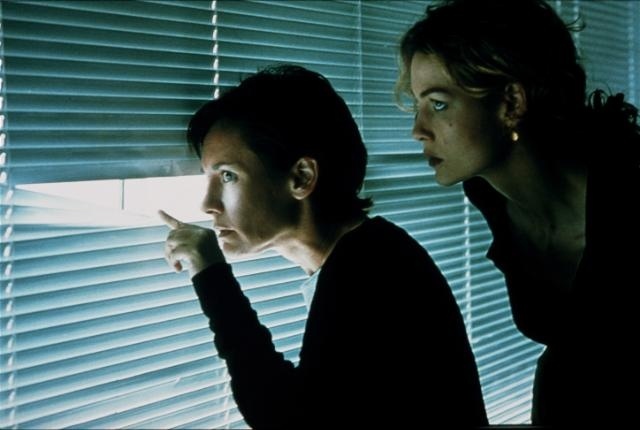
Timecode was filmed fifteen times before the theatrical version we got in 2000. Mike Figgis' ambitious project splits the screen in four simultaneous takes, that were also filmed at the same time each and every time the movie was "reshot" – each of them is unbroken, meaning the actors perform their characters' stories uninterruptedly, and the soundtrack indicates us where to look to better follow the overarching story that unites all four of them.
Salma Hayek plays a young actress having an affair with a disillusioned director (Stellan Skarsgard), trying to score a screen test for a movie; her insanely jealous girlfriend (Jeanne Tripplehorn) discovers the affair, and listens to the couple's conversation through a microphone planted in Hayek's character's purse; meanwhile, the director's wife (Saffron Burrows) discuss the possibility of divorce with a therapist; and a host of film industry types (Xander Berkeley, Golden Brooks, Holly Hunter, Kyle MacLachlan) deliver pitches for the next big hit.
Enjoying the liberty of having time and money to film it sixteen times, Figgis gave his actors a very simple script, relying on them to sometimes react to things that happened in the other frame, and improvise most of the dialogue. It's a fascinating experience to say the least, and a movie that requires multiple viewings after the first one, dedicated mostly to keeping track of the interwoven plot in this weird new format we have to get used to.
3. Russian Ark (Aleksandr Sokurov, 2002, 1h39m)
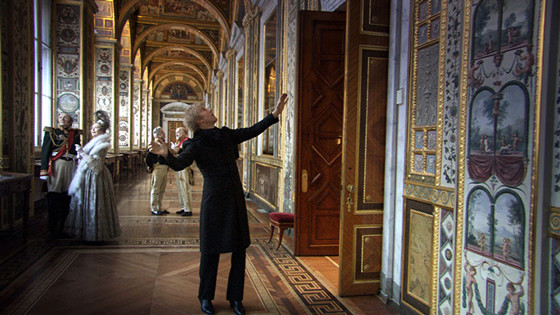
Also shot in real-time, Russian Ark was Aleksandr Sokurov's magnum opus – he only got it all right in his fourth attempt to film it, and one of the despairing little details is that he only had one day to do it, since his setting, the Russian State Hermitage Museum, had to be closed for visitations.
As a result, even the most mundane scenes in Sokurov's scripts translated to the screen as hold-your-breath moments, the performances and the camerawork transmitting to the audience the urgency of it all. The story is one of a 19th century French aristocrat, whose journey through the Hermitage Museum sees him encountering with a host of historical figures from Russia's past.
An oneiric journey all by itself, the film's lush costume design, complicated dialogue and performances, and sprawling portrait of Russian history is made much more astonishing by the technical feat. Almost like an absurdly complex, perpetually moving stage play, Russian Ark is a powerful cinematic experience, even for the ones not that interested in the past of one of the biggest, most powerful nations on the planet.
2. Birdman (Alejandro Gonzàlez Iñárritu, 2014, 1h59m)
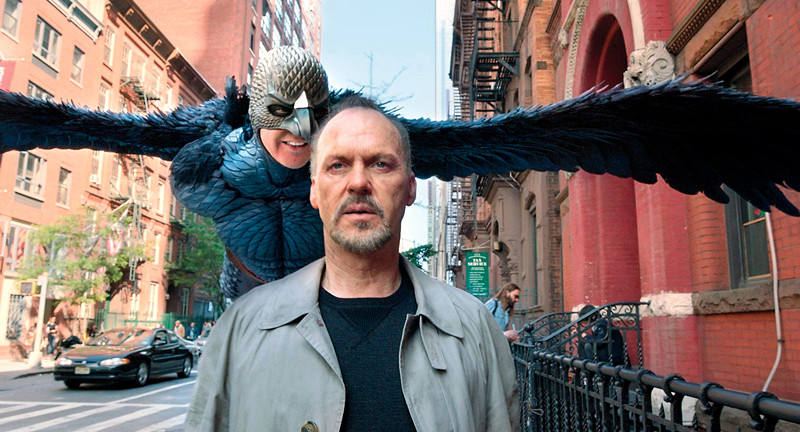
One of two contributions from cinematographer Emmanuel Lubezki in the list, Birdman put the "single-take movie" gimmick back in the spotlight in 2014, showing the comings and goings of a theater where Riggan (Michael Keaton), a former movie star known for playing a superhero, tries to work out the details of his new play. Both the director (Alejandro González Iñárritu) and the cinematographer won Oscars for their work, and Birdman eventually took home the Best Picture award too.
With the exception of a few cuts in the beginning and end of the movie, Birdman is edited to appear as one unbroken shot sprawling almost 2 hours of film. The decision works mostly because it highlights the despair in Riggan's mind as the day of his premiere approaches.
In Lubezki's striking cinematography, Birdman becomes a movie that seems to propel its narrative forward in one deep breath, and the characters' motivations and complexities become much clearer for that. It's one of the prime examples of the uses of this cinematic technique.
1. Victoria (Sebastian Schipper, 2015, 2h18m)
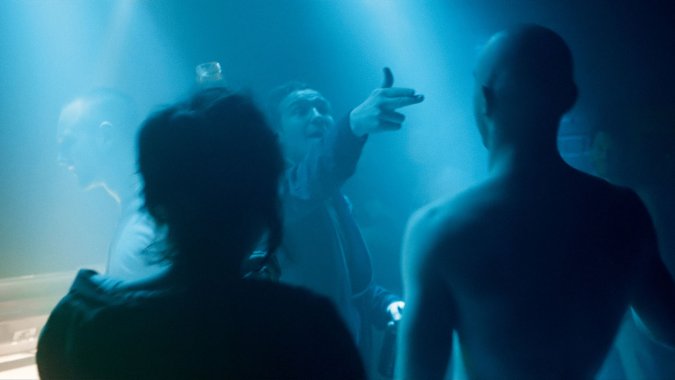
Victoria not only features the longest unbroken shot of cinema's history, it was actually filmed in real time, with a bare-bones script that allowed the actors to improvise most of the dialogue while following a predetermined storyline. Cinematographer Sturla Brandth Grovlen does brilliant work in not calling attention to this stunt, instead immersing the spectator in the story and the characters' journey and observing the bravura performances by the cast, especially Laia Costa.
The Spanish actress plays the titular character, a young woman who newly moved to Berlin and finds herself in the company of Sonne (Frederick Lau) and a few of his friends after a night out at the club – what follows is a descent into hell that demands the spectator's attention.
It's hard to not get involved with the story, the way Grovlen and director Sebastian Schipper tell it, because it feels like a fast-paced genre movie brought to life in ways that cinema hasn't achieved prior to Victoria. Though it's all arguably just a daring stunt by the cast and crew, it remains unprecedented that these artists pulled it off with such energy, excellence and aplomb.
Author Bio: Caio Coletti is a Brazilian-born journalist, a proud poptimist, and has too many opinions to keep them all to himself.
Pages: 1 2
whiteswastento1951.blogspot.com
Source: https://www.tasteofcinema.com/2016/the-10-longest-unbroken-shots-in-cinema-history/2/
0 Response to "Longest Continuous Shot in School Shooting Scene"
Post a Comment